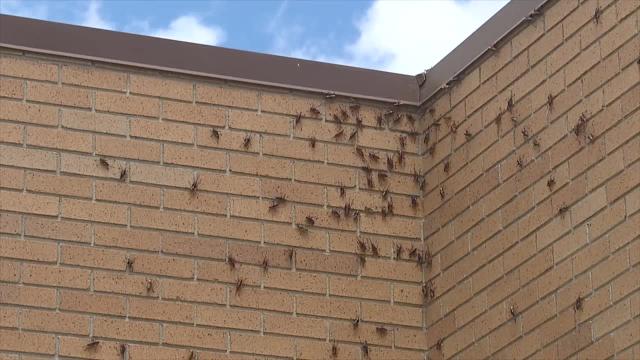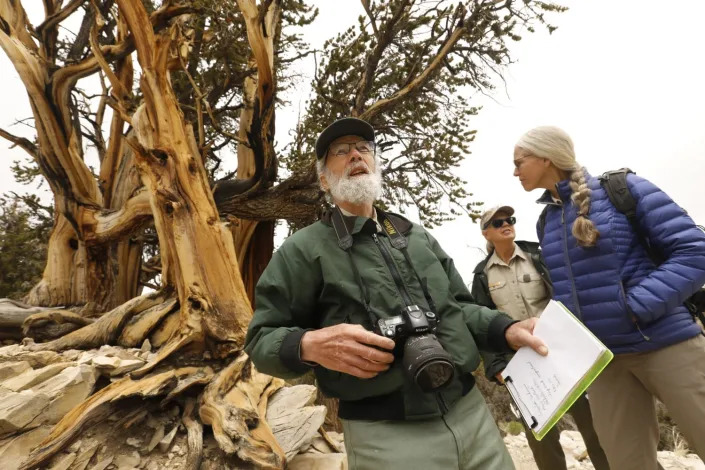Tesla is laying off workers who only just started and withdrawing employment offers as Elon Musk's job cuts begin
Tesla has laid off workers who only started at the company months or even weeks ago.
An intern had his full-time offer rescinded, while a recruiter was let go after just two weeks.
One employee told Insider they thought their position as manager made them "safe."
Tesla workers who started their jobs only months or even weeks ago have been let go while others have had offers withdrawn as the company begins to impose cuts announced by Elon Musk in early June.
Insider found a number of posts from Tesla employees who said they'd been laid off as part of the cut, while others had their job offers rescinded.
A senior employee who had only started earlier this year told Insider: "I was very shocked when I was told that I was being let go. Being a manager, I was under the impression that my position was safe."
Asked how Tesla had decided which roles to cut, he said: "They said that layoffs were based on performance reviews but that is not true in my opinion because I had only been at Tesla for a few months and had yet to have performance goals set or a performance review. I asked what metrics they used and they refused to tell me."
"The process definitely was not fair because I was never given the team that I requested."
Iain Abshier, who was part of the recruiting team, said on Tuesday in a LinkedIn post: "Damn, talk about a gut punch. Friday afternoon I was included in the Tesla layoffs after just two weeks of work."
Robert Belovodskij had his job offer as a "manufacturing controls development engineer" rescinded. He said: "The timing of the situation is also unfortunate as I was due to start in early August."
At the start of June Musk told Tesla executives to pause all hiring because he had a "super bad feeling" about the economy and needed to cut 10% of the company's workforce. However, he later tweeted that the headcount would increase, but the number of salaried staff would not rise.
Mansi Chandresha started at Tesla in February as a data analyst and posted on LinkedIn after learning she was being cut: "I have been trying to gather myself to the news that my position with Tesla was terminated."
Nevertheless she added: "I am grateful for the fact that I got an opportunity to work with a fantastic team."
Chandresha said she was urgently seeking a new role before her student visa expired at the end of July.
Two former employees are suing the company claiming the electric carmaker violated federal law by laying off hundreds of employees on short notice.
John Lynch and Daxton Hartsfield, who filed the lawsuit, said at least 500 of their coworkers in Nevada lost their jobs at around the same time, the document showed.
Insider found at least 11 more workers whose jobs had been cut. More are likely to suffer a similar fate as Musk said at the Qatar Economic Forum last week that reduction would take effect over the next three months.
Elon Musk confirms termination of 10 percent of Tesla salaried employees amid economic turmoil
On Tuesday, Tesla CEO and multibillionaire Elon Musk confirmed that the company would be laying off as much as 10 percent of its salaried workforce, or roughly 3.5 percent of its total workforce, over the next three months. His announcement has taken place amid disruptions in supply chains, which have impacted the electric vehicle industry, a drop in Tesla’s stocks, and numerous lawsuits filed against Tesla for frequent violations of labor and civil rights laws.
Earlier in the month, Reuters stated that they had obtained emails sent from Musk to executives in which he expressed that he had a “super bad feeling” about the economy and would be carrying out a mass layoff of salaried employees and would “pause all hiring worldwide.”
Since the leaked information, Musk has attempted to reassure employees about the current stability of the company while also openly admitting to Tesla’s economic uncertainty.
An email was sent out to all employees to clarify that the layoffs would “not apply to anyone actually building cars, battery packs or installing solar.” He also stated that Tesla would continue to hire for hourly positions. However, Electrek, a news website focused on electric transportation, later confirmed that there has been a second round of layoffs impacting hourly workers in sales and delivery teams.
The company reported in 2021 that it employed 100,000 people, which would translate to roughly 3,500 layoffs by the end of the summer if the 3.5 percent figure given by Musk is accurate.
On Tuesday, he attempted to reiterate his claims of stability, giving a statement at the Qatar Economic Forum that “A year from now, I think our [employee] headcount will be higher.” Musk’s statement likely reflects an attempt at damage control as Tesla stocks have spiraled following Reuters’ report on the layoffs.
Workers at the company have said they were “blindsided” by the sudden layoff. Some have also taken to social media to lament the poor working conditions among salaried employees at Tesla and to lament that they had not left the company sooner.
On TheLayoff.com, one worker wrote: “They utilized PIP [performance improvement plan, an internal policy often used to justify firings] to trim the people who they don't like for whatever reason. Obviously, Elon doesn’t have any sense about this. He doesn’t think that feeding your family is his job as a boss.”
Another worker left an anonymous post that stated: “Musk has obviously lost his damn mind. He wants everybody to work 60+ hour weeks with no breaks, no vacations, no days off, and certainly no work from home. All of this for the same pay (the lower the better)—just like the ‘exemplary’ employees in China do. You know, the desperate people who have no other choice if they want to survive. That's his ideal employee. If you got away from that, your situation can only improve.”
Musk’s public confirmation of mass firings took place between filing a lawsuit by former employees at Tesla’s factory in Sparks, Nevada—where a separate mass firing took place—and the release of statements Musk gave in late May in which he raises the possibility of Tesla going into bankruptcy.
The lawsuit, which was filed on June 19 by John Lynch and Daxton Harsfield, alleges that Tesla carried out a mass firing of 500 workers at Gigafactory 2 in May and June. The plaintiffs allege that the largest electric vehicle producer was in violation of the Worker Adjustment and Retraining Notification (WARN) Act because it fired over 499 workers without providing a written notice 60 days in advance.
Tesla is also the subject of multiple other lawsuits including one alleging that the company allowed for “rampant sexual harassment” of women at the Fremont, California factory. In a separate suit a judge had awarded Owen Diaz, an African American elevator operator at Tesla’s Fremont plant, $15 million in payment for the racial abuses he experienced on the job. Diaz has rejected the payment, instead calling for a new trial claiming the amount would not change the conduct at the company. In an initial trial Diaz was awarded $137 million by a jury, which was later reduced.
In June, Solomon Chau, a Tesla investor, disclosed that he was also suing the company claiming the poor workplace culture is damaging the company’s reputation and in violation of its fiduciary responsibilities to investors. Chau’s suit specifically names Musk, Tesla’s board members and the company as defendants.
Chau’s lawsuit likely also reflects growing concerns among investors over Tesla’s economic downturn. In an interview with Tesla Owners of Silicon Valley in late May, but published this week, Musk described the factories in Berlin, Germany and Austin, Texas as “gigantic money furnaces,” which are unable to produce because of continued supply chain concerns. Musk specifically pointed to the inability to supply these factories with batteries due to COVID-19 related lockdowns in China.
Tesla operates a plant in Shanghai, which produces batteries used in their vehicles.
Musk also raised the possibility of Tesla going into bankruptcy if it is unable to keep up production. Business experts have also pointed out that the company could face difficulty transferring funds out of China and that Tesla is likely going to announce a drop in earnings compared to the previous year. Analysts at Refinitiv estimated adjusted earnings could drop to $2.5 billion in the second quarter compared to $3.7 billion in the first quarter.
Musk’s statements are surprising given his history of making grandiose claims about the operations of various companies he is a part of. He has frequently used Twitter, a company he is currently attempting to purchase, as a means of encouraging stock and digital currency speculations.
Tesla’s high market valuation, particularly compared to the number of vehicles it produces, has largely been the byproduct of rampant speculation and the ruthless treatment of workers. Throughout the pandemic this has found a particularly sharp expression with Musk rejecting remote work and violating California’s lockdown measures to reopen the Fremont factory.
The announced firings confirm that in times of economic downturn, Tesla and other companies will respond even more ruthlessly to unload the crisis onto the workers.
Notably, the layoffs at Tesla have coincided with job cuts among the more traditional automakers as well as tech companies, and portends further attacks on autoworkers.































